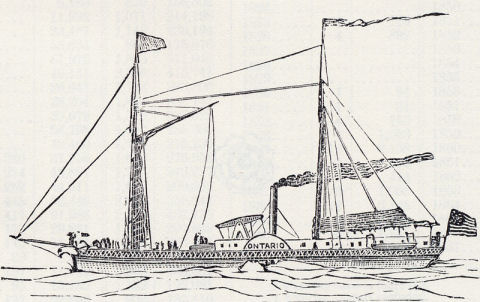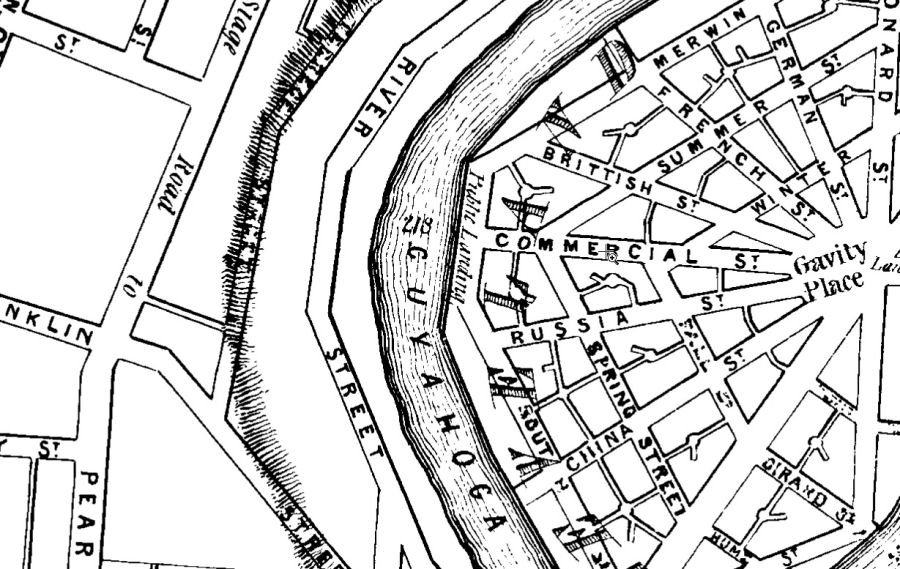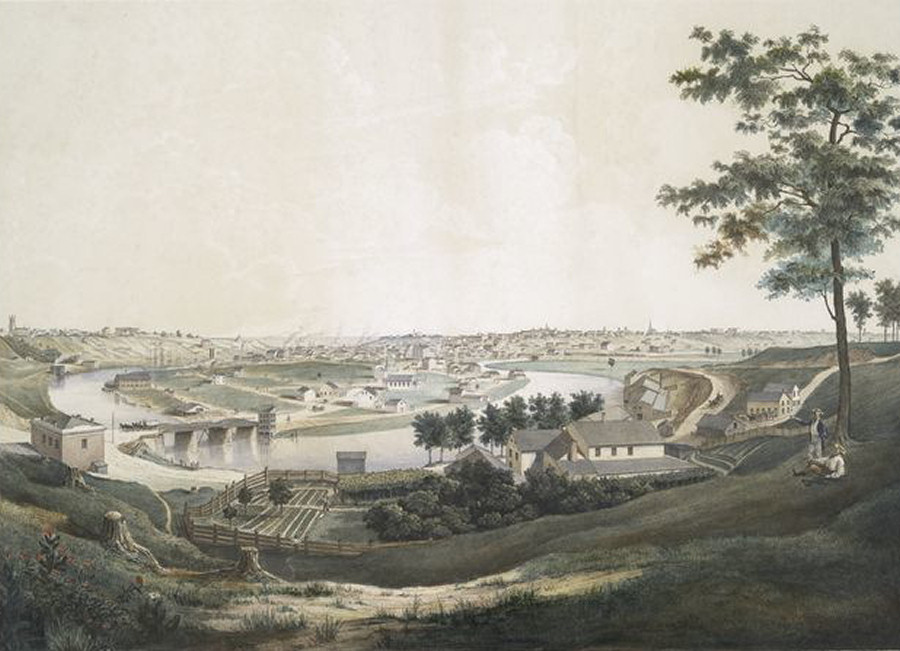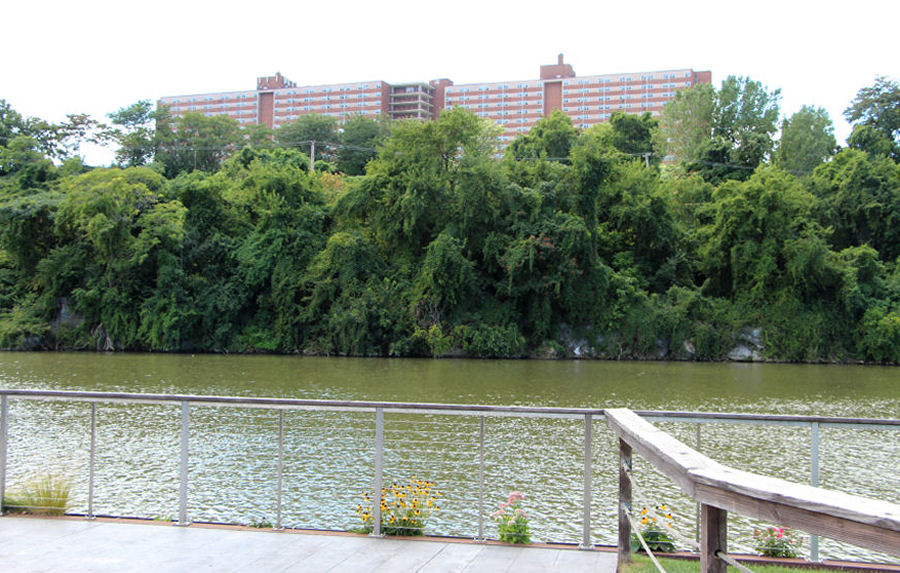|
The Wharf on Merwin Street |
||||||||||||
|
||||||||||||
|
||||||||||||
|
||||||||||||
|
An 1835 map showing the wharf |
|
| Surveyor Ahaz
Merchant (1794-1862) prepared this map in 1835
There are
steep hills on both sides of the river valley.
Merchant's map show them as close short lines. Here at Irishtown Bend on the west side the hill is very close to the river. When this map was drawn the land west of the river was in Brooklyn Township, but in 1836 it became Ohio City |
The land
in the peninsula bounded on three sides by the
Cuyahoga River was owned by real estate speculators
who called it Cleveland Centre and gave the streets
names that envisioned it as a center of
international trade, and its center was named
Gravity Place. At the foot of Commercial Street and the start of Merwin Street we see the wharf as Public Landing. |
|
|
|
|
Oxbow Bend in 1851 |
|
| To early settlers the peninsula that the Cuyahoga River forms here as it makes its snake-like way to Lake Erie was like the "U" shaped metal bow that held an ox to its yoke. Thus the name "Oxbow Bend". Cleveland Centre" (the peninsula) and Ohio City, at the left past the river, are now in the city. |
At the left of this drawing of the view north, toward the lake,
we see the Columbus Street Bridge (1835). once a
place of great controversy. North of the bridge, along the river's east bank, is the public landing — the wharf on Merwin Street. |
|
|
|
|
About this image "Panorama of Cleveland and Ohio City, taken from Scranton Heights" This image, scanned from a book "History of Cleveland" by James Harrison Kennedy. 1896, was found in the Cleveland Memory Project. |
It is also online in a New York Public Library print collection in color, dated 1851 and attributed to artist Jacob Mueller and lithographer Otto Onken. View the print on the NYPL website |
|
|
|
|
In 1858, the year of the map shown below left,
Cleveland's population was about 40,000 — nearly
seven times what Merchant noted
on his 1835 map. A major reason was voters of adjacent towns and villages asking to join Cleveland, which would then annex them. A prime example: Ohio City in 1854. Railroads had reached Cleveland. One line can be seen below. Later maps show many more. |
The public landing on Merwin Street is gone.
The hundreds of steam ships that came
each year could now land at a pier on the shore of
Lake Erie. The recent Google satellite view (below right) shows a river widened on its west bank and its hillside built up and planted. Merwin's Wharf, the Cleveland Metroparks restaurant, can be seen in the lower right. The actual site of the old wharf is about 300 yards north, on the east bank, near the top of the image below. |
|
|
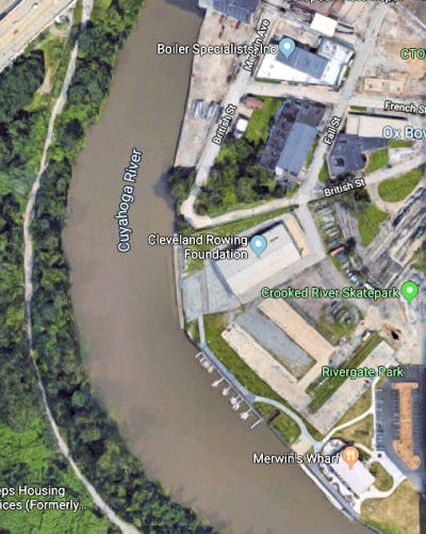 |
|
The west bank of the Cuyahoga River as seen from the wharf |
|
| The Cuyahoga River here, at what is called Irishtown Bend, has an unusual feature: a bluff on its west side that rises about 120 feet higher than the east bank and overlooks downtown Cleveland. On it is Riverview Terrace, a 600 foot long 15 story building built in 1963. It offers 490 apartments for seniors. The far side of the building faces West 25th Street. | Even without this building, the site is very different from what those landing at the wharf on Merwin Street would have seen. The river has been widened to allow ore ships to navigate safely, the hill has been built up and planted, and bulkheads driven into the river bed positioned to keep the hill from sliding into the river and restricting river traffic. |
|
|
|
| Photo by Robert N. Brown | |
|
Thanks to Judy MacKeigan, Historian/Archivist, Cleveland Metroparks
and Martin Hauserman and Charles Mocsiran of the
Cleveland City Council Archives
|
|
Learn more (these
external links will open in a new window)
|

